A pre-cursor extensive Miocene reef system to the Rowley Shoals reefs, Western Australia: evidence for structural control of reef growth or natural hydrocarbon seepage?
Georgina Ryan A , George Bernardel A , John Kennard A , Andrew T Jones A , Graham Logan A and Nadege Rollet AGeoscience Ausatralia
The APPEA Journal 49(1) 337-364 https://doi.org/10.1071/AJ08021
Published: 2009
Abstract
Numerous Miocene reefs and related carbonate build-ups have been identified in the Rowley Shoals region of the central North West Shelf, offshore Western Australia. The reefs form part of an extensive Miocene reef tract over 1,600 km long, which extended northward into the Browse and Bonaparte basins and southward to North West Cape in the Carnarvon Basin—comparable in length to the modern Great Barrier Reef. Growth of the vast majority of these Miocene reefs failed to keep pace with relative sea-level changes in the latest Miocene, whereas reef growth continued on the central North West Shelf to form the three present-day atolls of the Rowley Shoals: Mermaid, Clerke and Imperieuse reefs.
In the Rowley Shoals region, scattered small build-ups and local reef complexes were first established in the Early Miocene, but these build-ups were subsequently terminated at a major Mid Miocene sequence boundary. Widespread buildups and atoll reefs were re-established in the Middle Miocene, and the internal stacking geometries of the reefs appear to relate to distinct growth phases that are correlated with eustatic sea-level fluctuations. These geometries include: a basal aggradational buildup of early Middle Miocene age; a strongly progradational growth phase in the late Middle to early Late Miocene that constructed large reef atolls with infilling lagoon deposits; and a back-stepped aggradational growth phase that formed smaller reef caps in the early–latest Late Miocene.
Growth of the majority of the reefs ceased at a major sea-level fall in the Late Miocene (Messinian), and only the reefs of the present-day Rowley Shoals (Mermaid, Clerke and Imperieuse reefs, as well as a drowned shoal to the southwest of Imperieuse Reef) continued to grow after this event. Growth of the Rowley Shoals reefs continued to keep pace with Pliocene-Recent sea-level changes, whereas the surrounding shelf subsided to depths of 230–440 m.
We conclude that initial reef growth in the Rowley Shoals region was controlled by transpressional reactivation and structuring of the Mermaid Fault Zone during the early stage of collision between the Australian and Eurasian plates. During this structural reactivation, seabed fault scarps and topographic highs likely provided ideal sites for the initiation of reef growth. The subsequent growth and selective demise of the reefs was controlled by the interplay of eustatic sea-level variations and differential subsidence resulting from continued structural reactivation of the Mermaid Fault Zone. In contrast to models proposed in other regions, there is no direct evidence that active or palaeo hydrocarbon seepage triggered or controlled growth of the Rowley Shoals reefs or their buried Miocene predecessors.
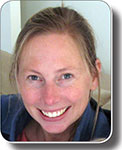
Georgina Ryan completed a BSc (Hons) at the Australian National University in 1999. She has since worked for Geoscience Australia as a petroleum geologist, gaining extensive experience in basin analysis and hydrocarbon seep detection. Georgina has experience working with 2D seismic, multibeam and sidescan sonar, underwater video, echo-sounder, sediment samples and oceanographic data. She has specialised in the use of sub-bottom profile data to detect shallow gas. She is working as a geohazards specialist at RPS Energy in Perth. RyanG@rpsgroup.com.au |
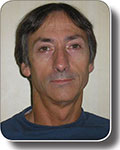
George Bernardel obtained a BSc (Hons) in geophysics from the University of Sydney (1986), as well as a BEng in computer systems from the University of Southern Queensland (2004). George is a geoscientist at Geoscience Australia, with 15 years experience in seismic acquisition and processing, seismic interpretation and law of the sea technical analyses. George has recently been involved in geological studies of the northern Lord Howe Rise and seismic data acquisition along the western Australian margin. george.bernardel@ga.gov.au |
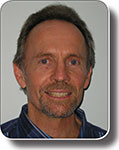
John Kennard obtained a BSc (Hons) in geology from the Australian National University (1974) and a PhD in geology from Memorial University of Newfoundland, Canada (1989). John is a senior geoscientist at Geoscience Australia, with over thirty years experience in geological mapping, sedimentary basin analysis, petroleum geology and natural hydrocarbon seepage studies, including twelve years petroleum systems analysis of Australia’s North West Shelf. John is undertaking petroleum systems studies of the Browse and Bonaparte basins. John has authored/co-authored over 30 scientific publications on the sedimentary and petroleum geology of Australian hydrocarbon- bearing basins. john.kennard@ga.gov.au |
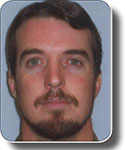
Andrew Jones completed a BSc (Hons) in earth sciences (1997) and a PhD in sedimentology (2003) at The University of Queensland. He joined Geoscience Australia in 2001 where he initially focussed on earthquake and coastal erosion hazard. In 2003 he joined the Petroleum and Marine Division as a member of a multidisciplinary team studying natural hydrocarbon seepage, where he participated in Australian and international seepage studies in offshore sedimentary basins. Andrew is researching the petroleum prospectivity of Australia’s North West Shelf as part of Geoscience Australia’s Producing Regions Project. andrew.jones@ga.gov.au |
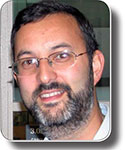
Graham Logan obtained a BSc (Hons) from the University of Glasgow in geology (1988) and a PhD in organic geochemistry from the University of Bristol (1992). He worked at Indiana University and CSIRO Petroleum before joining Geoscience Australia in 1997. He is project leader of the Remote Eastern Frontiers Project in the Petroleum and Marine Division of Geoscience Australia. Graham has published over 50 papers and is associate editor for Geochemica et Cosmochimica Acta. Member: Geochemical Society. graham.logan@ga.gov.au |
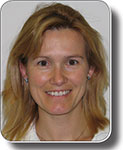
Nadege Rollet is a research scientist at Geoscience Australia. She obtained a MSc and a PhD in geology and geophysics from the University of Paris—Pierre et Marie Curie, France, in 1995 and 1999, respectively. Her studies are focussed on geodynamic reconstructions and structural framework of the South and Southeast Australian margins, and detection and characterisation of natural hydrocarbon seepage on the North and Northwest Australian margin. She is working in the Remote Eastern Frontiers project in Petroleum and Marine Division at Geoscience Australia. nadege.rollet@ga.gov.au |


